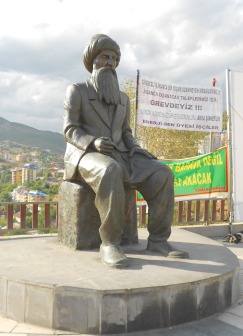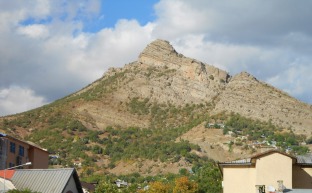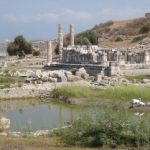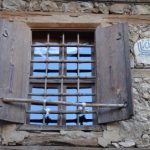Stronghold of the Alevis Population: 36,300
Old names: Kalan, Dersim
Right in the heart of Central Anatolia between Erzincan and Elazığ, Tunceli is a town with a very troubled past only partly concealed by changing its name from Dersim to Tunceli in 1936.
There had been rebellions here against central authority since the 1860s. Then in 1937 the town became the scene of an major uprising led by the local chieftain Seyit Riza who was hanged by the government in 1938. An estimated 13,000 people were killed in what is known as the Dersim Massacre for which the Prime Minister formally apologised in an unprecedented step in 2011.
In late 2013 it looked as if the town would be able to revert to its old name which is, in any case, widely used by everyone including the local authority. Since then, however, politics has again rendered what to call a place politically charged.
Despite its spectacular geographic situation at the foot of Dündürtepe, the town centre is entirely modern and has little to attract tourists apart from those interested in seeing a primarily Kurdish Alevi Zaza-speaking community in action. In particular, women are much more conspicuous than is usual in Turkey and very few of them have their heads covered. More women can be seen at work here than anywhere else in Turkey, not excepting İstanbul.
Tunceli-Dersim also serves as the most obvious base for visiting the Munzur Valley, Turkey’s largest (and least visited?) national park, located around Munzur Dağı (Mt Munzer, 3463m).
 Around town
Around town
The most obvious landmark in the town centre is a large statue of a bearded Seyit Riza at a point where you can look down on the Munzur river. If you walk a short way along Ovacık Caddesi you will come to a memorial wall commemorating the events of 1938 and those caught up in them.
There is a very interesting new museum (closed Mondays) housed in an old barracks dating back to the 1930s not far from the statue. Alongside its archaeological and ethnographical collections it contains a lot of information about the Alevi faith and culture.
The town’s cemevi can be found back out of the centre on the road to Erzincan opposite a petrol station. It’s easier to find the unexciting Paşalar Cami in the town centre which was built with one minaret in 1942 and restored with a second one in 1985.
Eating and drinking
There is a surprisingly large and inviting cafe called Kahve Arası near the Grand Saroğlu Hotel where young people of both sexes assemble to tuck into a typically international menu of salads, burgers, sandwiches and flavoured coffees. In summer you can sit outside beneath the plane trees and admire the view of the rugged Munzur Mountains in the distance.
The Kalan Restaurant on the top floor of a building right in the town centre offers mountain views, live music and food of a more formal Turkish type.
Sleeping
Grand Saroğlu Hotel. Tel: 0428-212 1424
Has Hotel. Tel: 0428-212 1115
Transport info
Minibuses leave Elazığ for Tunceli every half-hour from offices immediately opposite the Harput bus stop in Harput Caddesi. It’s a pleasant journey that involves a ferry ride across the lake to Pertek. Return services leave from behind the Denizbank in Tunceli.
Timetabled minibuses to Ovacık leave from near the statue of Seyit Riza. The journey takes just over an hour and follows a spectacular route along the Munzur river.
There are no dolmuş services from Tunceli to Çemişgezek because access is easier from Elazığ. You can, of course, drive yourself.
Nearby areas


